Topics - UEC Research and Innovation
The University of Electro-Communications publishes the October 2024 issue of the UEC Research and Innovation newsletter.
The October 2024 issue of UEC Research and Innovation includes video profiles of UEC faculty Kohei Kimura (Innovation) and Yuri Shinohara (Research) the Research Highlights section covers research by Yoshihiro Nakata (Innovation) on robots and “Food psychology”, and Hideo Isshiki (Research) on “Layer-by-layer copper aluminum oxide films for advanced p-type thin film transistors”.
The news covers the 6th ASEAN-UEC Workshop on Informatics and Engineering 2024 and President Tano Visits VGISC (Vietnam).
News
September 13, 2024
6th ASEAN-UEC Workshop on Informatics and Engineering 2024
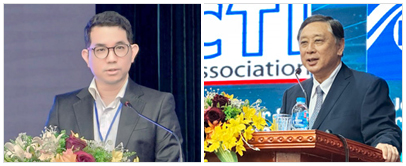
The UEC ASEAN Research and Education Center held the 6th ASEAN-UEC Workshop on Informatics and Engineering on September 8, 2024, at the Academy of Cryptography Techniques (ACT) in collaboration with the ECTI Association (Thailand) and the Radio and Electronics Association of Vietnam (REV). The annual workshop, launched in 2019, offers ASEAN and UEC students the chance to present at international conferences.
September 11, 2024 President Tano Visits VGISC (Vietnam)
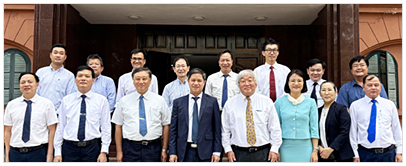
On Friday, September 6, 2024, UEC President Tano, accompanied by Dr. Oya, Board Member for International and Public Relations Strategy, and other UEC representatives, visited the Vietnam Government Information Security Commission (VGISC).
Research Highlights - Research
Electronics Layer-by-layer copper aluminum oxide films for advanced p-type thin film transistors
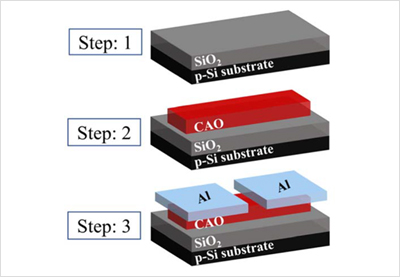
As the basic building blocks of many electronic devices, transistors are an integral part of our society. A particularly widely used type of transistor is the field-effect transistor, in which an electric field is used to control the current in a semiconductor — a material that doesn’t conduct current as well as copper and other metals but is also not an insulator like glass. The control of current flow in the semiconductor enables the amplification of electric signals. Field-effect transistors are commonly used to amplify weak signals, for example in wireless communication technologies. Research on transistors is on-going, as fabricating materials for novel transistors, which typically need to be highly crystalline and defect-free, can be challenging. Now, Hideo Isshiki and colleagues from The University of Electro-Communications, Tokyo have succeeded in manufacturing a thin film transistor (TFT) based on copper aluminum oxide (CAO), with initial tests showing promising device characteristics. TFT is a key device for flexible and transparent electronics.
Research Highlights - Innovation
Food psychology Moving food sensation
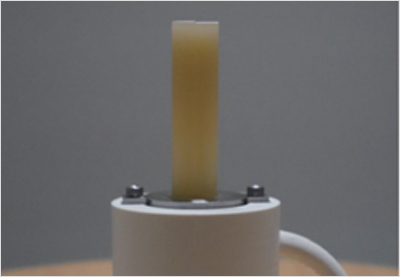
Eating is essential for humans to stay alive. In addition, the consumption of food has social and cultural connotations. The eating of live fish or other seafood, for example, is a custom that exists in Japan, where it is referred to as “odorigui”, literally meaning “dancing eating”. Live food consumption is an interesting field of study from a psychological point of view — indeed, people may experience different moral emotions when consuming live creatures. Performing controlled psychology experiments with people eating live food is challenging, however. Synthetic moving food offers an alternative means for studying such eating experiences. Now, Yoshihiro Nakata from The University of Electro-Communications, Tokyo, and colleagues have developed a moving, edible robot based on gelatin and sugar [1]. Introducing the concept of human–edible robot interaction, they demonstrated that the robot enables controlled experiments probing the human psychology of animated food consumption.
Video Profile - Research
Advanced analysis of martensite microstructures based on crystallography and kinematics
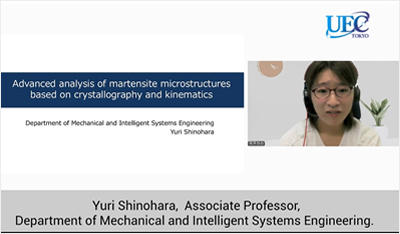
Yuri Shinohara
Associate Professor, Department of Mechanical and Intelligent Systems Engineering
Video Profile - Innovation
Transformable and Multipurpose robotics
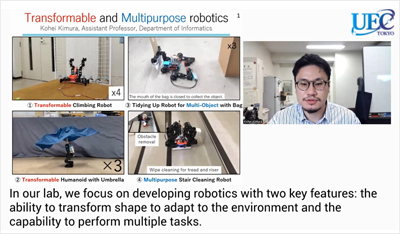
Kohei Kimura
Assistant Professor, Department of Informatics

